Have you ever wondered why some popular plants have rather large and waxy leaves?
The waxy covering on a leaf is caused by cutin, which is designed not only to retain water but to act as an additional layer of protection against harm that can be brought about by insects or other plants.
Because of its water-retention benefits, droughts, and dry spells are not a problem to plants that have developed cutin.
If your home location is in an area that is almost always dry, we have done the research for you on what kinds of plants with waxy leaves you can plant in your garden.
- Related article: Grow Guides for Houseplants
Join us as we take a look at 17 amazing plants with waxy leaves that you can grow as a beautiful houseplants in your garden or home!
1. Peace Lily (Spathiphyllum Wallisii)
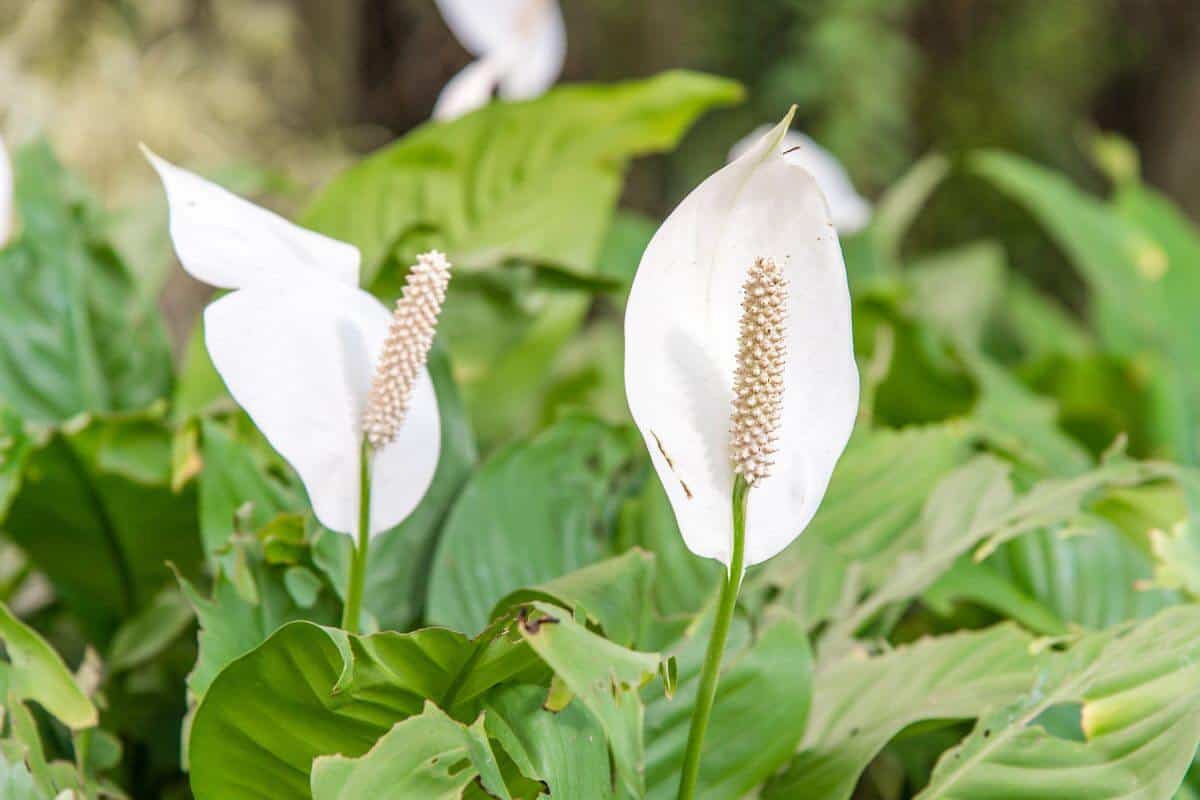
The Peace Lily is a tropical plant that thrives on forest floors. This common houseplant is even commonly referred to as a Closet Plant as it will even grow in your closet.
It is best grown in places with ambient sunlight and needs the soil to remain moist.
The “Peace Lily” gets its name from its white flower that resembles a peace flag. Its dark green, waxy leaves grow from the center of the plant and provide a contrast to the white flower that blooms from its stem.
It’s important to note that the Peace Lily’s flower is mildly toxic.
2. Radiator Plant (Peperomias)
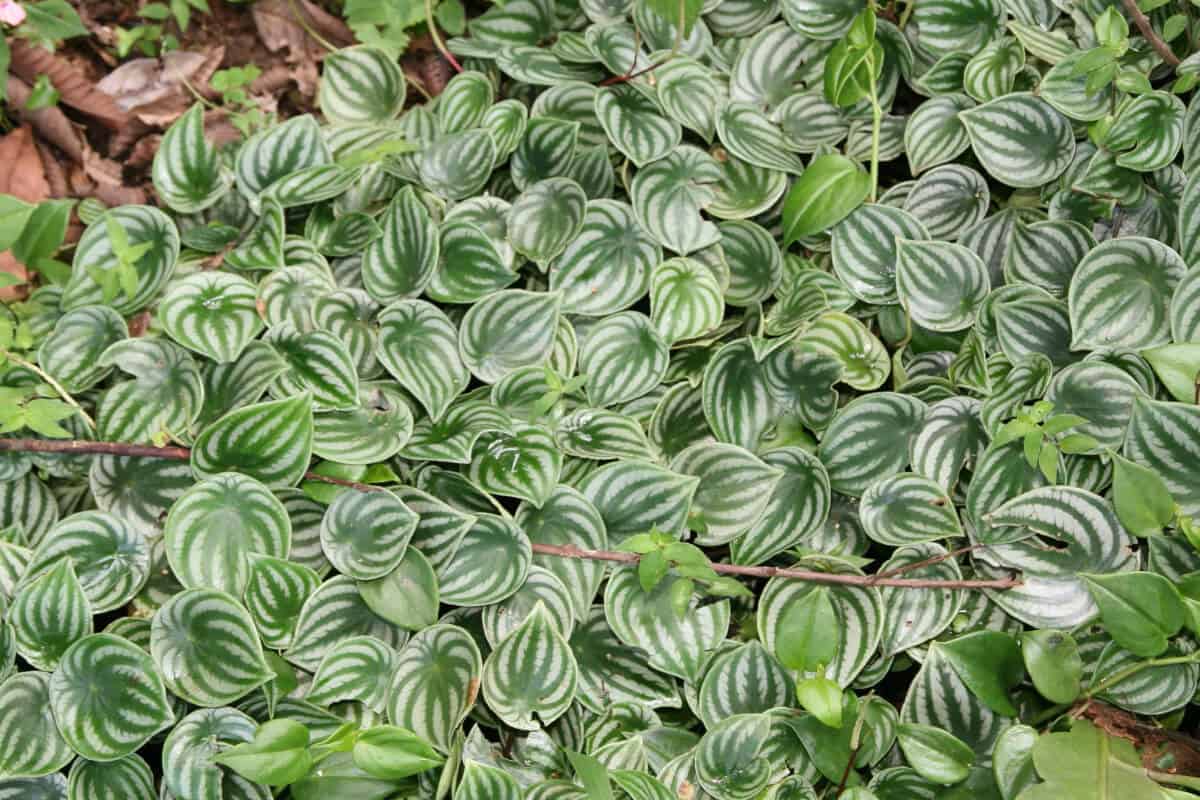
The Radiator Plant is an evergreen perennial plant that is often grown indoors, or under shaded areas in hanging pot plants.
The luscious, thick, green foliage of the Radiator Plant is filled with intricate white patterns, which is a real eye-catcher.
The Radiator Plant grows well in areas that are filled with ambient light throughout the day as its leaves don’t particularly do well in direct sunlight.
This evergreen is tolerant of heat but is susceptible to losing leaves in the drier winters.
When taken care of, this plant is able to grow up to 62 inches tall.
3. Bromeliad (Bromeliaceae)
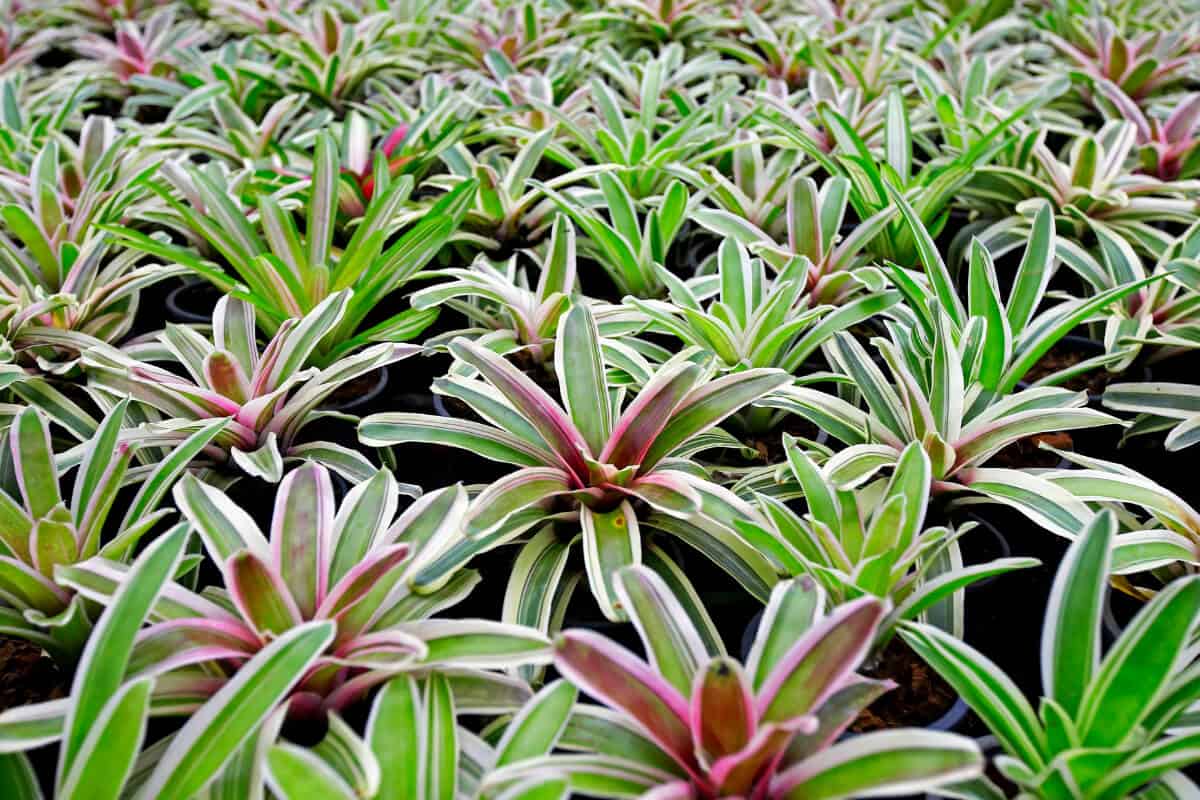
What makes the Bromeliad interesting is its unusual appearance.
These plants are usually tolerant to fluctuations in temperature but some varieties cannot withstand colder climates.
Bromeliads can be both epiphytic and terrestrial.
One thing to know about these plants though is that they are not fast-growing and might take about 3 years for them to reach their flowering stage.
Many bromeliad varieties with soft, flexible, and spineless leaves usually prefer lower light levels while those with stiff, hard leaves prefer bright, indirect light.
4. Lace Leaf Plant (Anthurium)
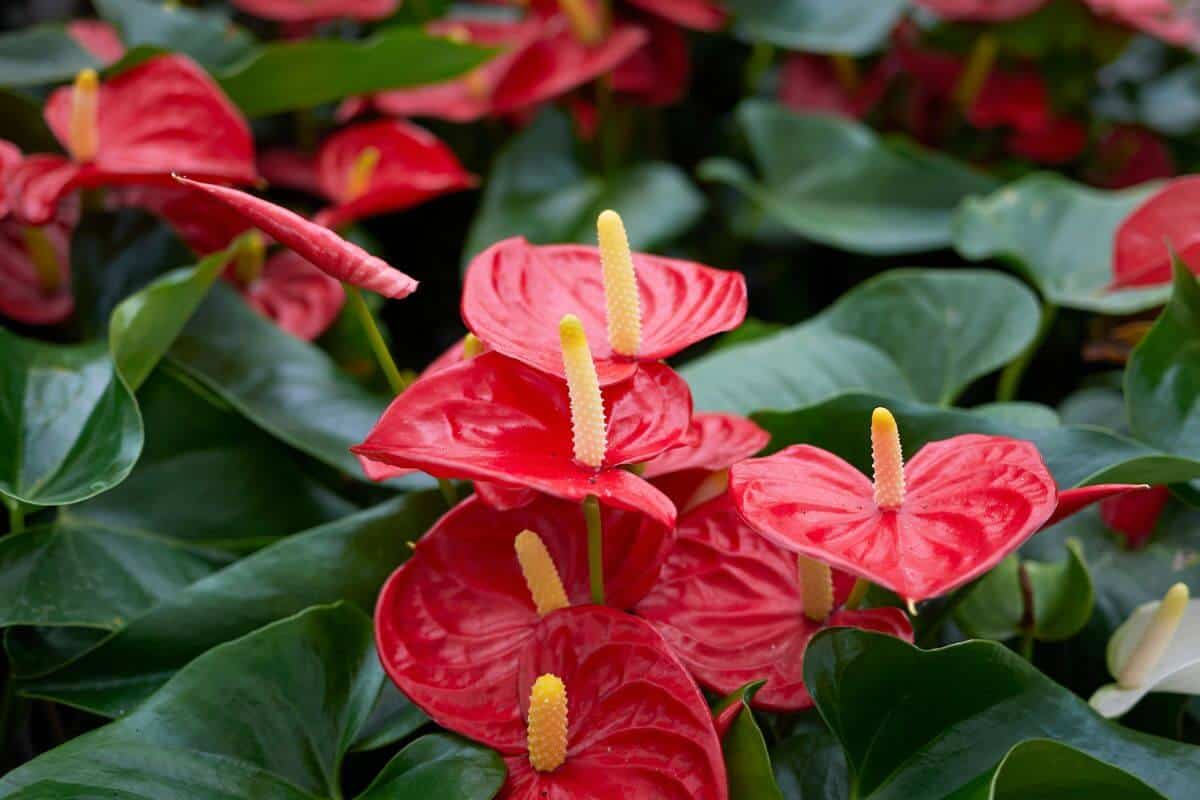
You’ll often find the Lace Leaf Plant around homes or offices as this long and elegant plant is a popular choice among indoor plants.
Over 1000 varieties of Anthurium exist and a lot of it lies in Central and South America where it hails and forms beautiful clusters.
Because of its waxy appearance, a lot of people can easily mistake this for a fake or porcelain plant.
It grows best in warmer, indoor climates, and prefers ambient sunlight, plus it’s also easy to maintain and anyone can grow it.
5. Echeveria Succulent (Echeveria)
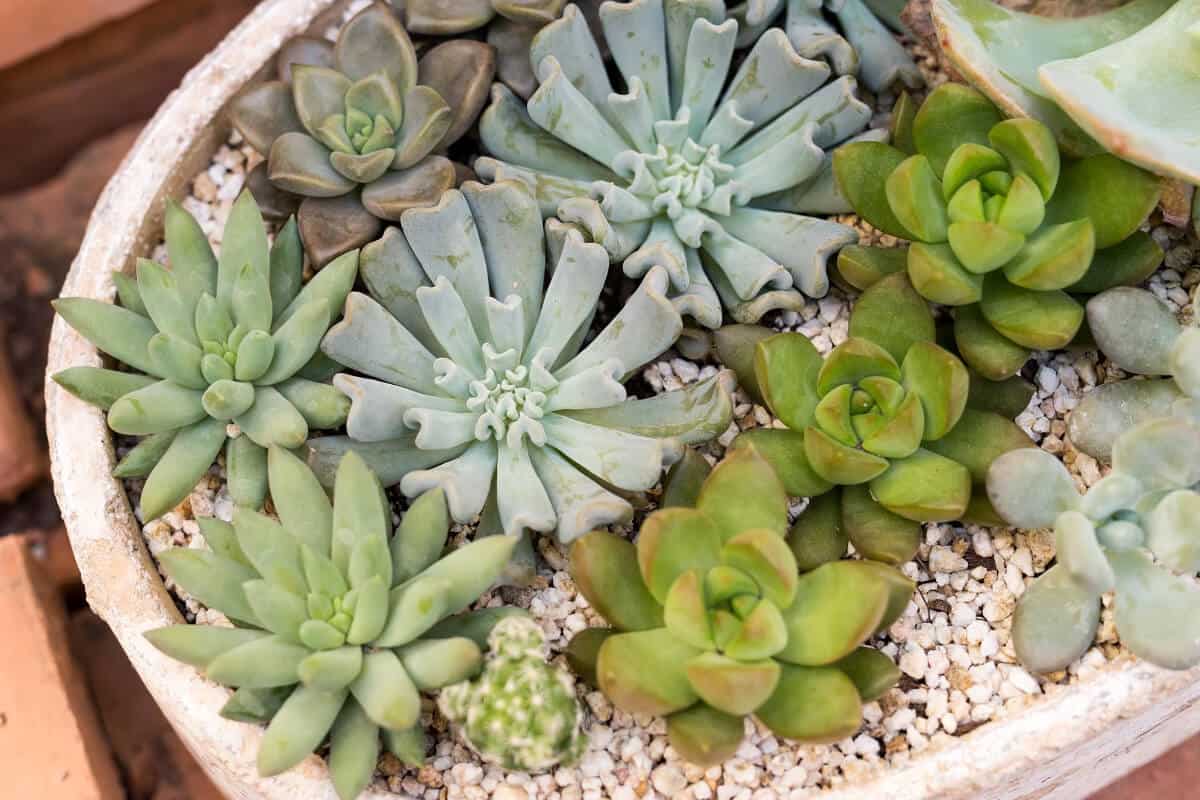
The fat, wax-like leaves of echeverias are responsible for their ability to survive in harsh desert temperatures and dry seasons.
The Echeveria succulent has thick, fleshy, spoon-shaped leaves that come in a mix of blue and gray along with some green colors.
The vibrant tones and textures of the Echeveria succulent will add dynamics to your garden. Still, in order to maintain that, it is important that this succulent is given over 6 hours of direct sunlight per day.
In the warmer, summer months, the plant will produce beautiful flowers which are bell-shaped that will form from the stems of the plants.
The ideal growing conditions for this succulent are in dry areas of your garden as they are able to tolerate wet and cooler conditions to a certain extent.
6. Rubber Fig (Ficus Elastica)
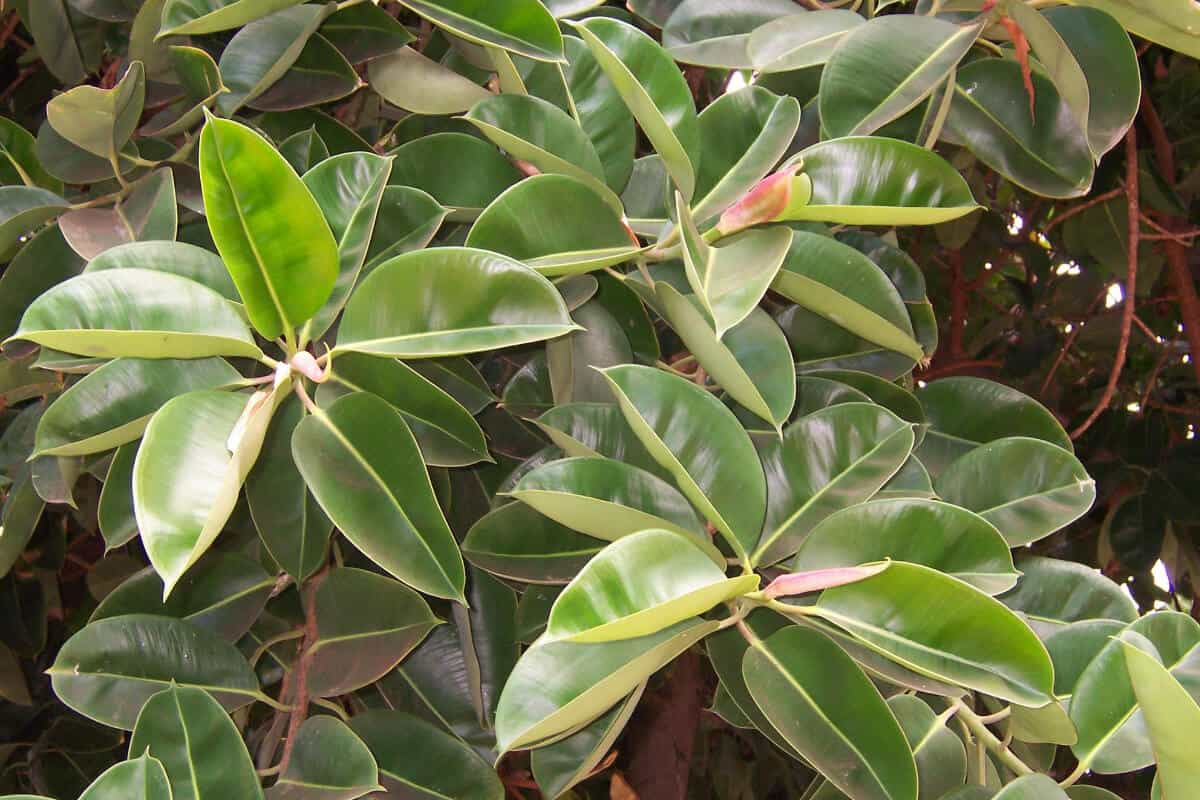
The rubber fig tree is also known as the “Indian Rubber Tree”. This attractive plant is native to the forests of Asia and can grow really tall, and fast in the right conditions. It has oval leaves in hues of burgundy and dark green.
It is a hardy plant that does not have much of a fuss so it’s perfect for beginners. The rubber fig loves temperate climates and can withstand most temperatures but it must be kept indoors when it is very cold.
You’ll need to maintain a rigorous watering schedule, though, as this plant has a thirst like no other.
Keep it away from children as though because it produces latex which is used in rubber production and can be toxic when ingested.
7. Jade Plant (Crassula Spp.)
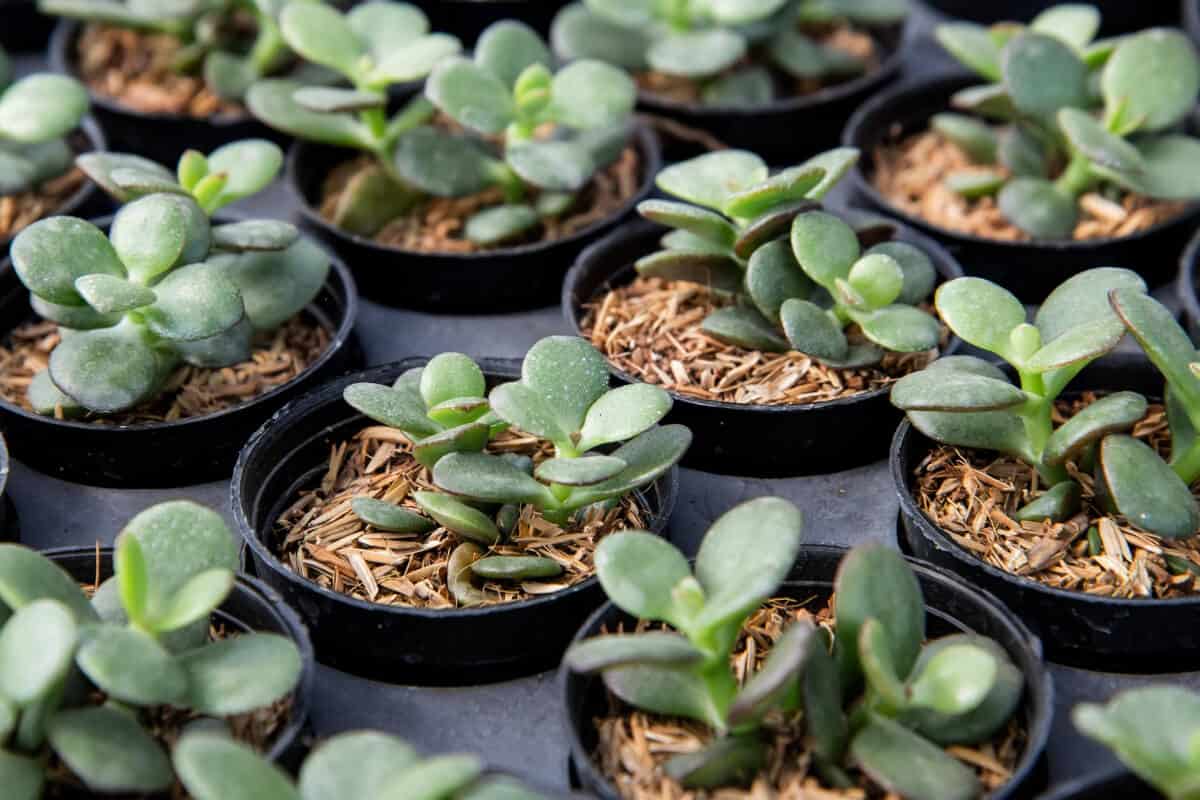
The Crassula plant, or sometimes referred to as the Jade Plant, Money Plant, Money Tree, or Lucky Plant, is a part of the succulent family.
It’s a plant with origin in South Africa and is now commonly grown as a houseplant, but in warmer climates, it has the potential of growing into a small shrub tree.
The Jade Plant is relatively easy to grow and requires low maintenance, its glossy dark green leaves contrast well against a white wall.
It’s hard to neglect this plant, it will survive with the bare minimum, however, it is sensitive to heat.
During the spring and summer months, this plant is actively growing and will require more water than its dormant period in the winter months.
Read more about growing the Jade Plant at Home.
8. Zanzibar Gem (Zamioculcas Plant)
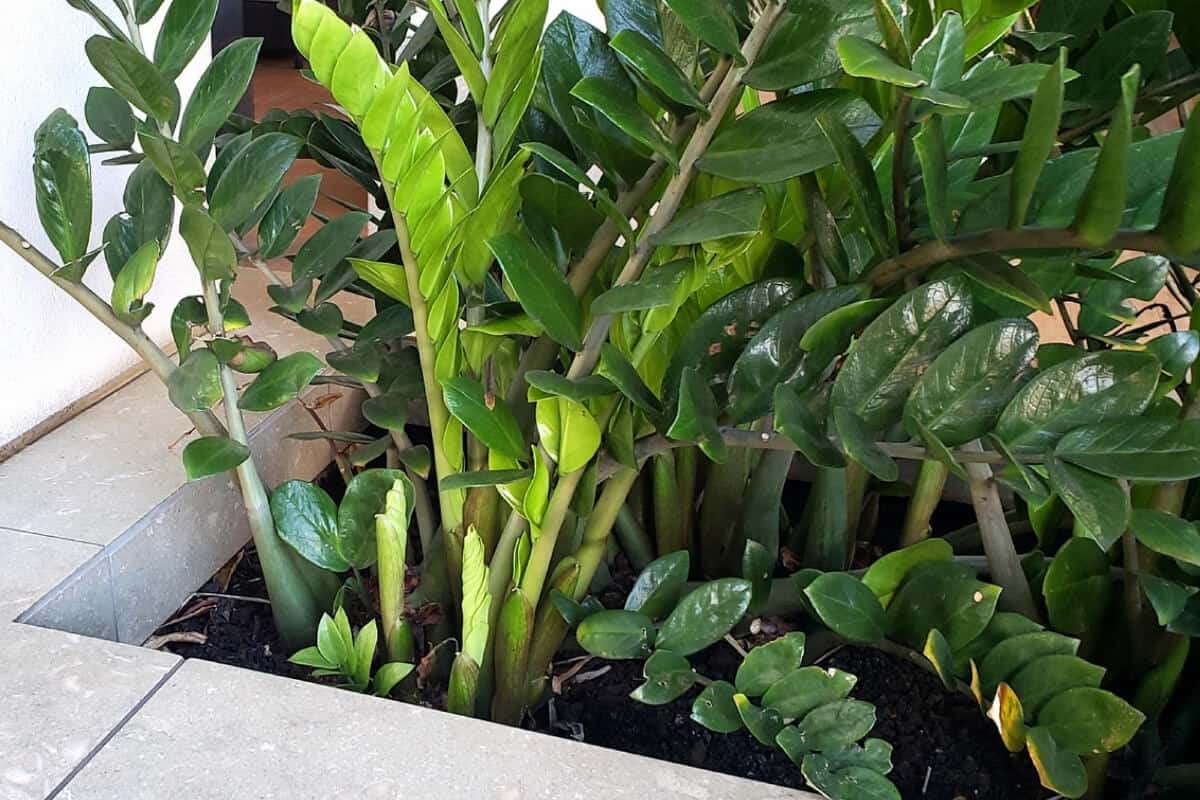
The Zanzibar Gem, popularly known as the ZZ Plant, is very popular among beginners. They can support a very busy lifestyle, requiring little to no care.
They can also withstand long weeks without water due to a combination of their waxy leaves and rhizomes.
In fact, you only need to water this plant every three weeks and adjust your schedule in the hot summer months.
Many people confuse the ZZ plant for an artificial plant because of its waxy coating in the leaves. They prefer bright light to direct sunlight so exposing them to a warmer area in your home might be a good idea.
It is a slow-growing plant however and does not like cold weather as much.
9. Heartleaf Ice Plant (Mesembryanthemum Cordifolium)
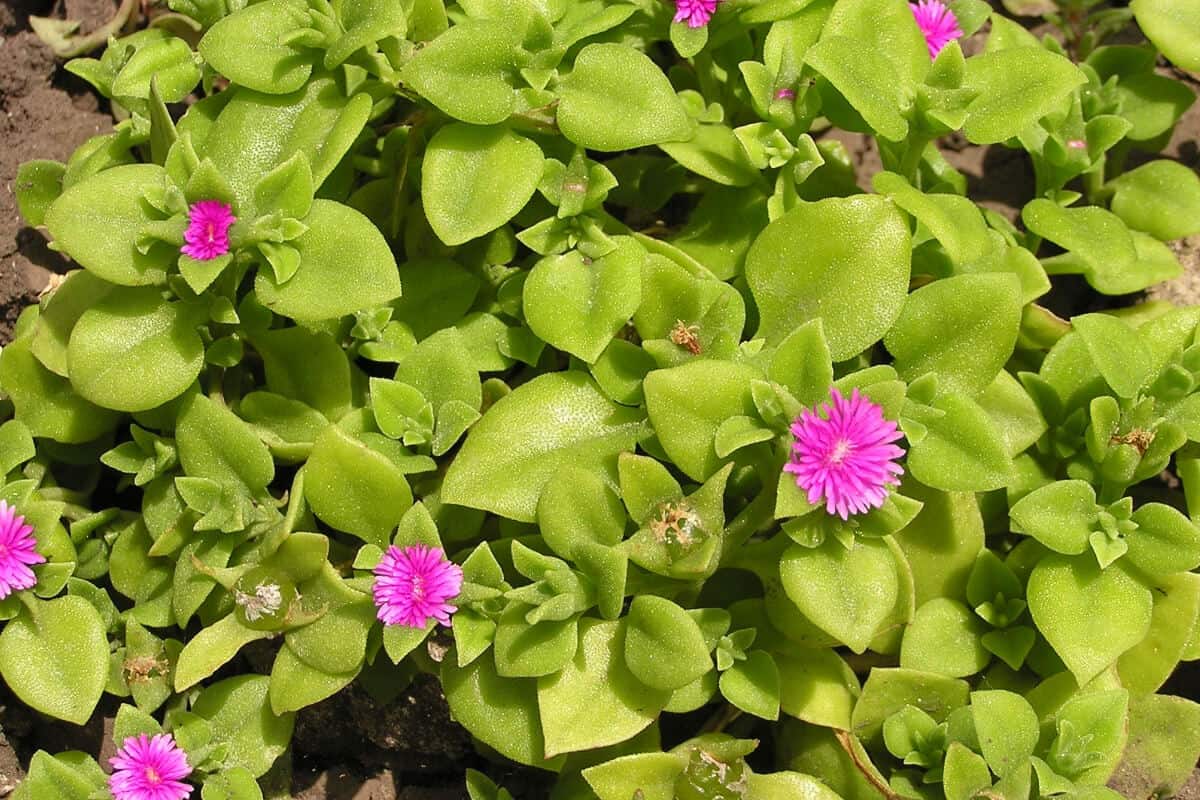
The Heartleaf Ice plant is a vigorous succulent plant with fleshy leaves and attractive flowers in bright red rose color. These blooms last all summer long and add contrast to the green foliage around your garden.
Contrary to its name, this plant is a lover of the sun and prefers warmer climates. Therefore they are best placed outside where you have bright, direct light.
However, if you don’t have a garden space and would like to keep it indoors, you can simply place it near the window and it will still thrive.
This low-maintenance succulent and a quite hardy plant.
10. Carissa Holly (Ilex Cornuta)
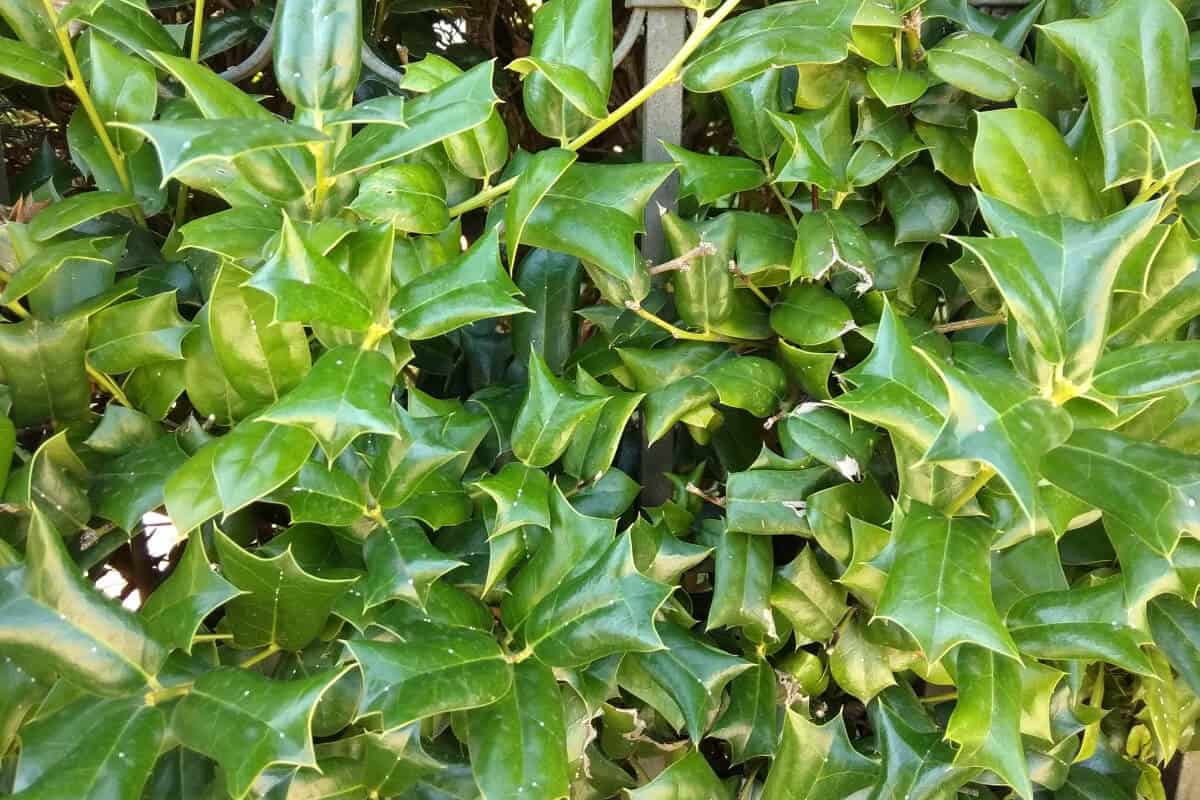
The Carissa Holly is a luscious, perennial, green shrub that is often grown as foliage and fills open spaces in a garden.
The shrub is slowly-growing and occasionally needs to be pruned to be kept in check.
This hardy plant can tolerate most climates, and it’s resistant to heat, wind, and drought conditions.
The Carissa Holly won’t grow in excess of 4 feet high and 6 feet in width, but it will grow in just about any soil conditions.
It’s best to water this shrub significantly more in the spring to the summer period as it will accelerate in growth.
You won’t need to worry about disease or insects affecting this shrub because it’s virtually resistant to most insects and diseases.
11. Hoya Carnosa (Hoya Carnosa)
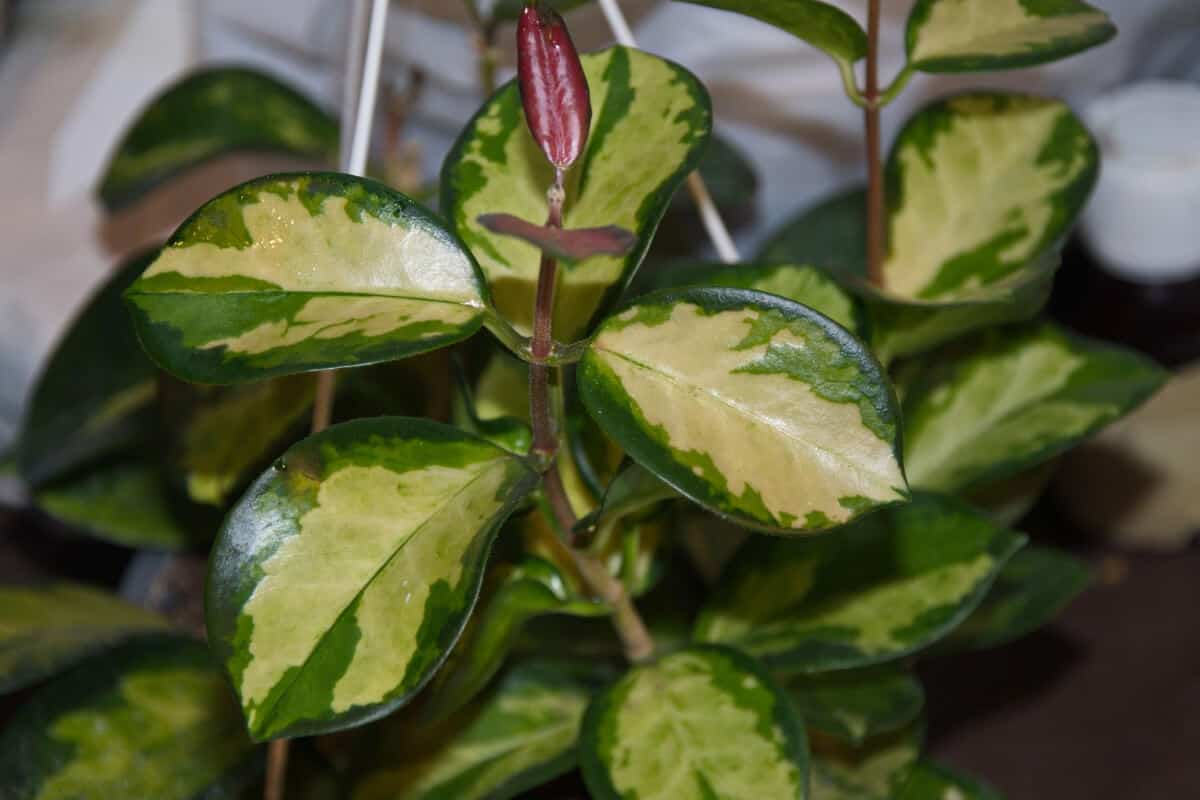
The Hoya Carnosa, better known as the Wax Plant, has its origin in Eastern Asia and is a trailing or climbing plant that loves to creep up fences.
The Wax Plant has thick, deep green, leathery leaves and is prone to getting silver and white flecks.
The Hoya Carnosa blossoms during the spring, summer, and fall—producing a white and pink flower that is star-shaped. The flowers don’t just look amazing, but they emit a sweet-smelling fragrance throughout your home or garden.
The Hoya Carissa is best grown in indirect, bright sunlight throughout the day, and requires substantial amounts of water during its blooming period.
12. Swedish Ivy (Plectranthus Verticillatus)
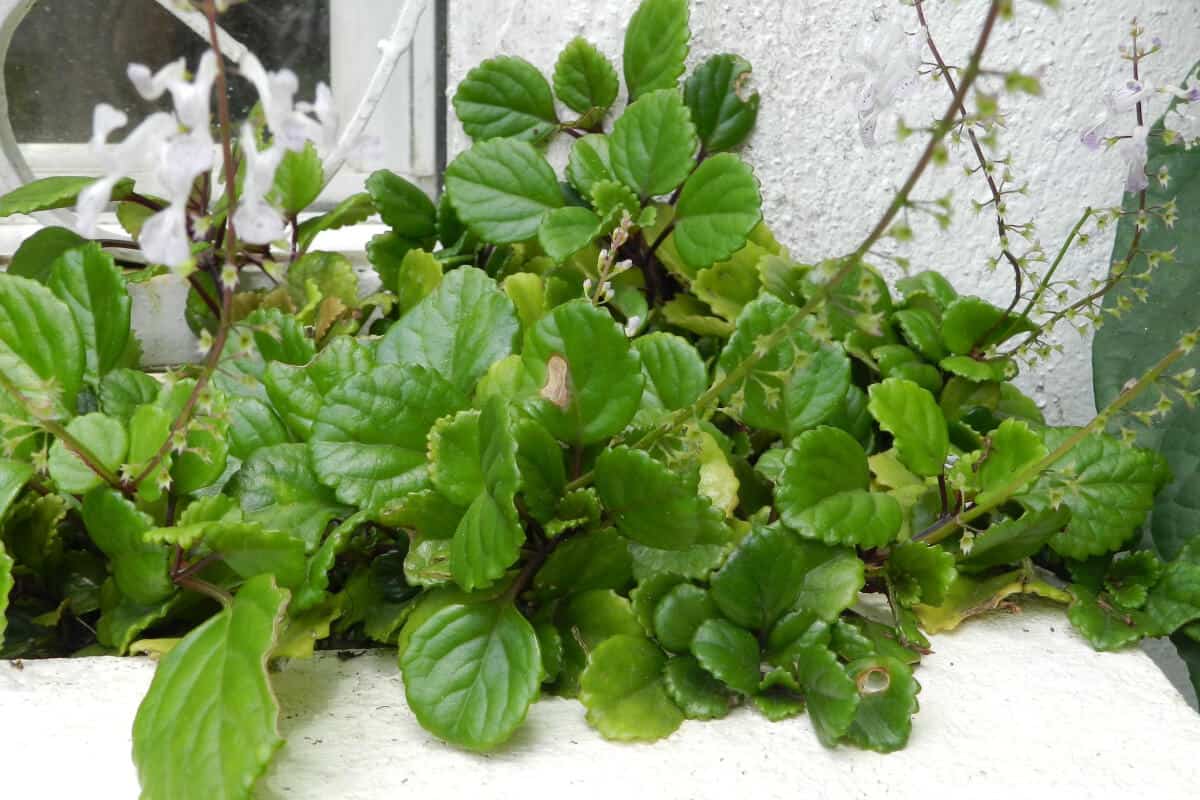
Swedish Ivy is also often called “Creeping Charlie.” It is an evergreen perennial that you most commonly see in pots hanging from the ceiling.
They are lovely to look at especially when grown long to two to three feet in length as they drape elegantly among their pots. If you want, you can also use them as ground cover.
Its leaves are scalloped and are very glossy in appearance. This plant produces white flowers from spring up until fall, but its glossy foliage is the real show-stopper.
Swedish Ivy requires ample amounts of indirect sunlight throughout the year.
13. Pothos (Epipremnum Aureum)
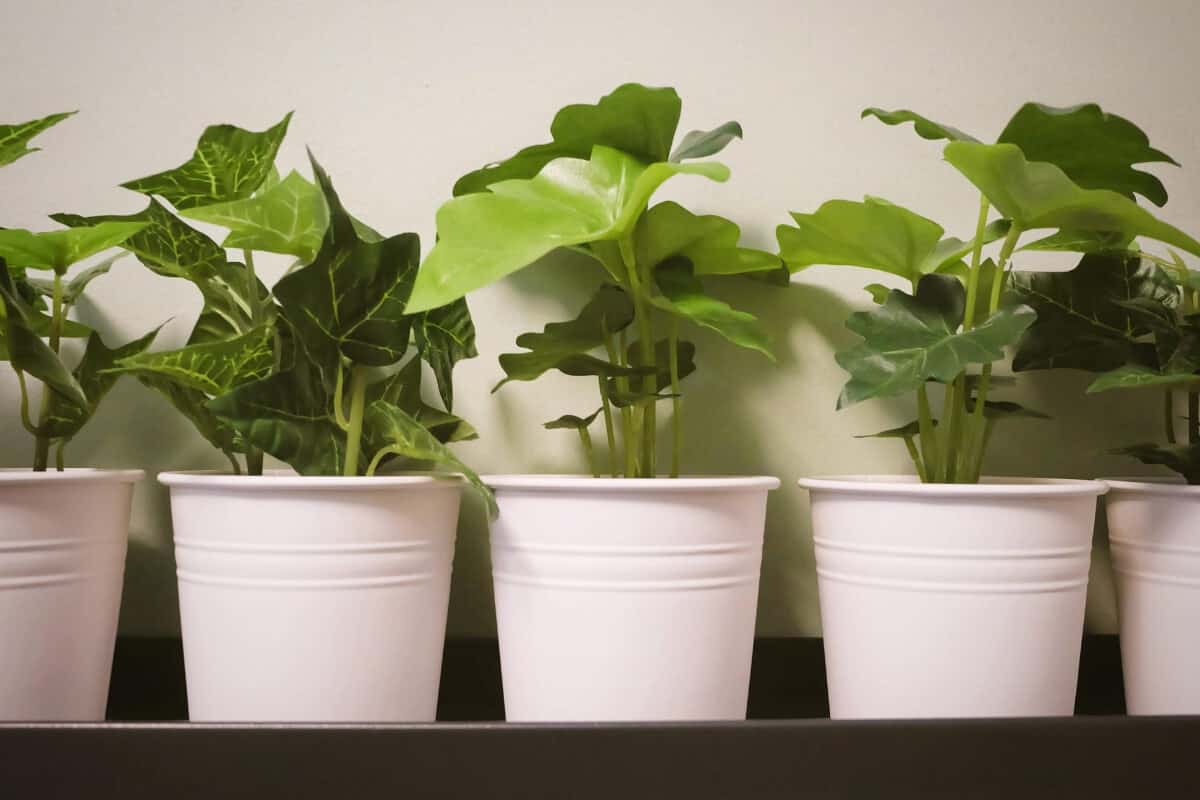
Hailing from Southeast Asia is the Pothos Plant, which some people also call, the “Devil’s Ivy“.
This plant is also great for beginners and can thrive in both soil and water. They also have aerial roots to aid them in getting nutrients from the environment.
When grown in soil, allow this plant to dry completely before watering it again. Also, you can look for physical signs on this waxy leaf plant such as dry and brown patches that indicates its need for adequate water.
There are different types of pothos but the variegated ones are such a beauty. Those have mottled leaves with yellow and white patches.
What makes pothos great indoor plants is their ability to thrive in low-lit and shaded areas.
14. Alocasia Polly (Alocasia Amazonica)
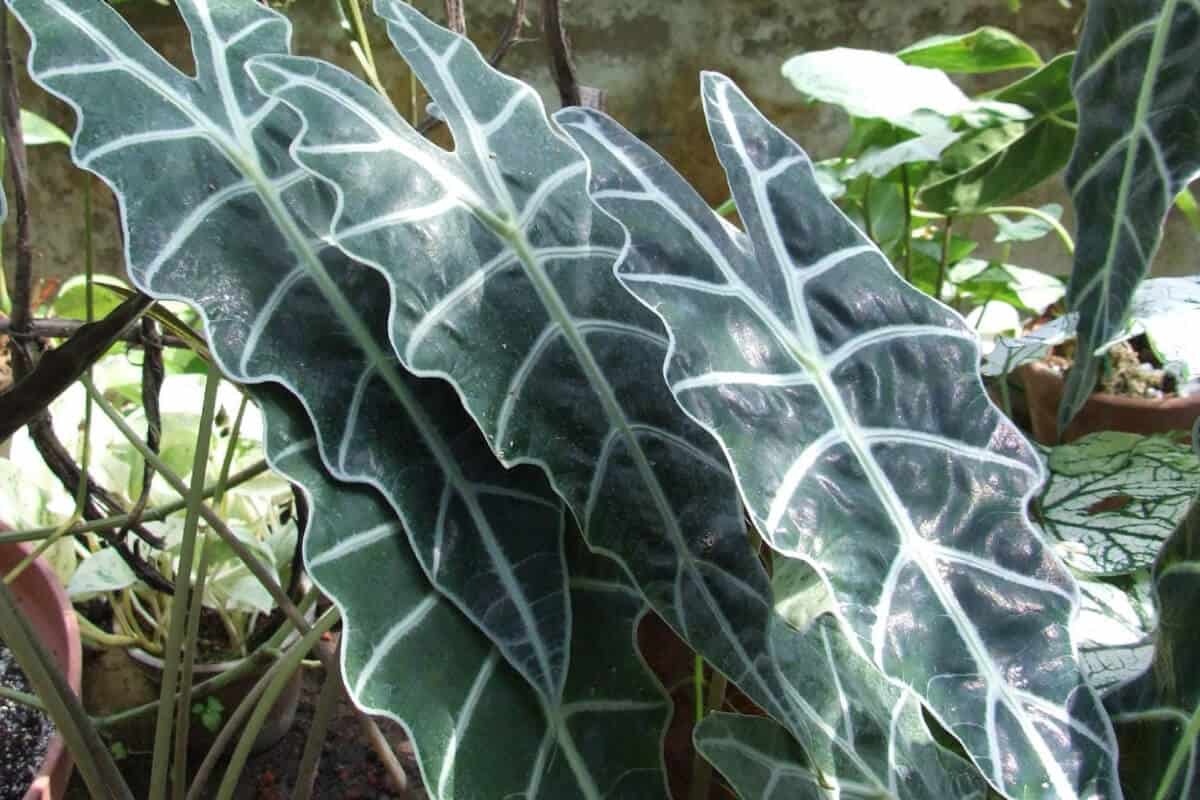
The Alocasia Polly is named after its appearance. Its leaves actually resemble an elephant’s ear that is wide and big. Some people call it the “African Mask Plant” or the “Amazonian Elephant’s Ear”.
Most Alocasia Polly have thick, waxy leaves covered in cutin and they grow best in indirect sunlight. The leaves are also dark green in color with light green colored veins.
This plants is well suited for well-lit indoor areas as its sensitive leaves might burn from direct sunlight.
Remember to keep a watering schedule for this plant, especially during the spring to summer months.
Learn more about Alocasia Plants at Home.
15. Swiss Cheese Plant (Monstera Deliciosa)
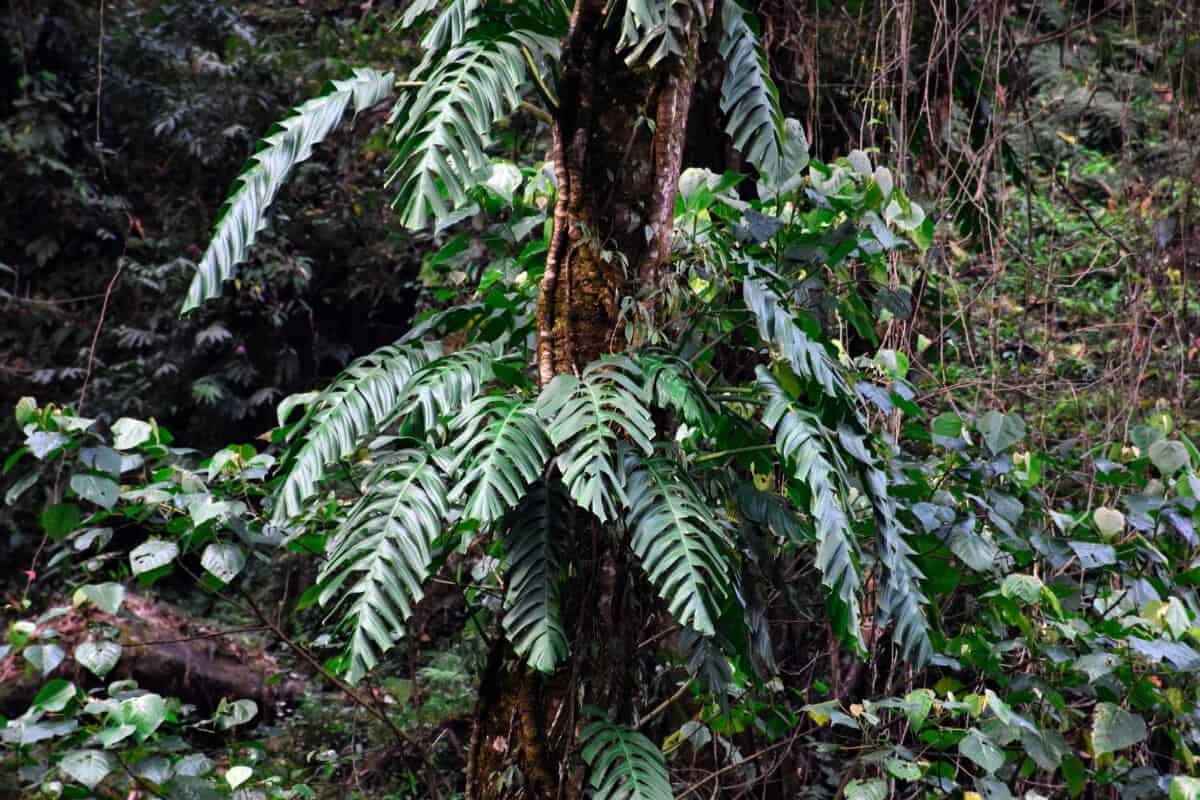
The Swiss Cheese Plant is a tropical plant that inherits its name from the rather large divots that occur on its dark green leaves from a process called Fenestration, making its leaves resemble a piece of Swiss Cheese.
Swiss Cheese Plant, or sometimes referred to as Fruit Salad Plant, Fruit Salad Tree, or Delicious Monster, is frequently used as a houseplant, although it has the potential to grow into a large, outdoor plant.
Indirect sunlight, and lots of it, is needed for this indoor plant. Alternatively, it can grow exceptionally well under the shade of trees too.
Keep the soil of your pot plant constantly moist, and it’s recommended to use coco coir as a growing medium, instead of soil.
The Swiss Cheese grows at a fast pace and needs to be watered regularly and maintained.
16. Dwarf Umbrella Tree (Schefflera Arboricla)
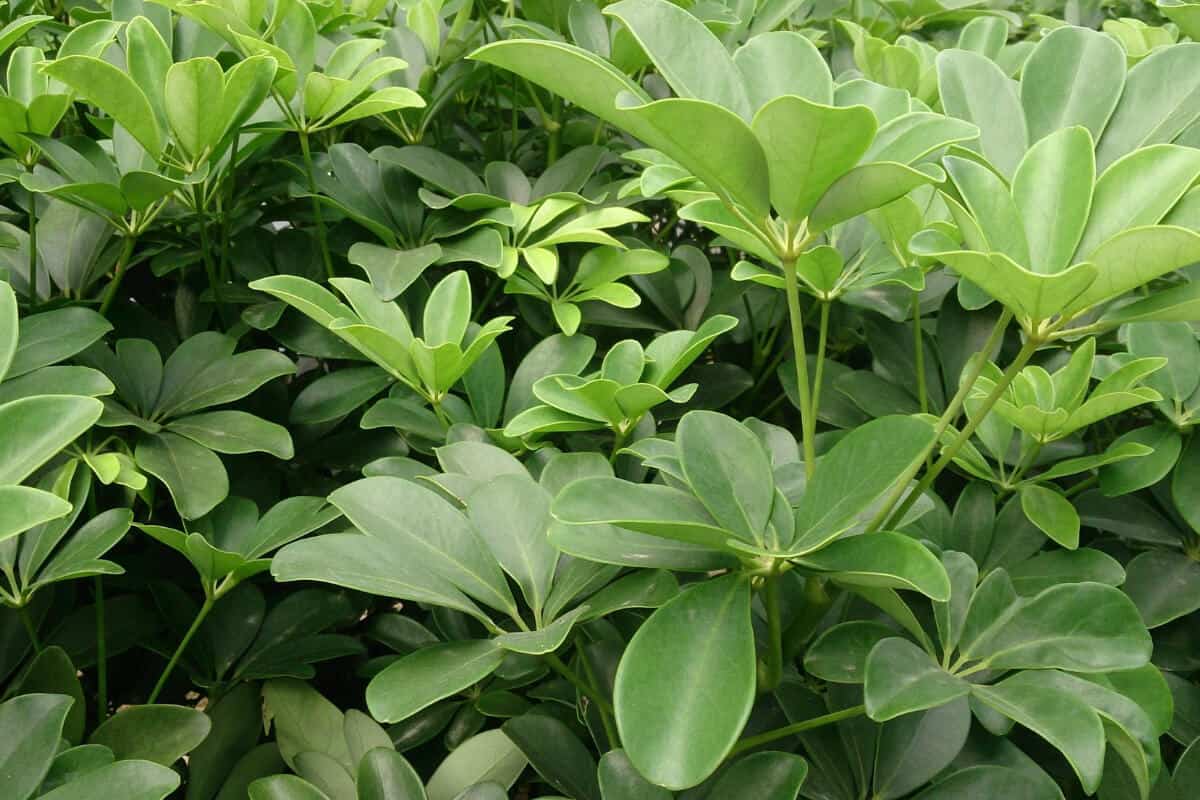
The Dwarf Umbrella Plant is certainly not small in stature as it has the potential to reach over 15 meters in height. However, there is an indoor version that can be kept to a manageable size of 4 to 8 feet.
The glossy, green leaves of the Dwarf Umbrella plant are variegated with tones of yellow. This plant is best placed in areas with indirect sunlight if you don’t want it to grow that vigorously.
Be careful in watering this plant though as it is susceptible to root rot.
17. Desert Rose (Adenium Obesum)
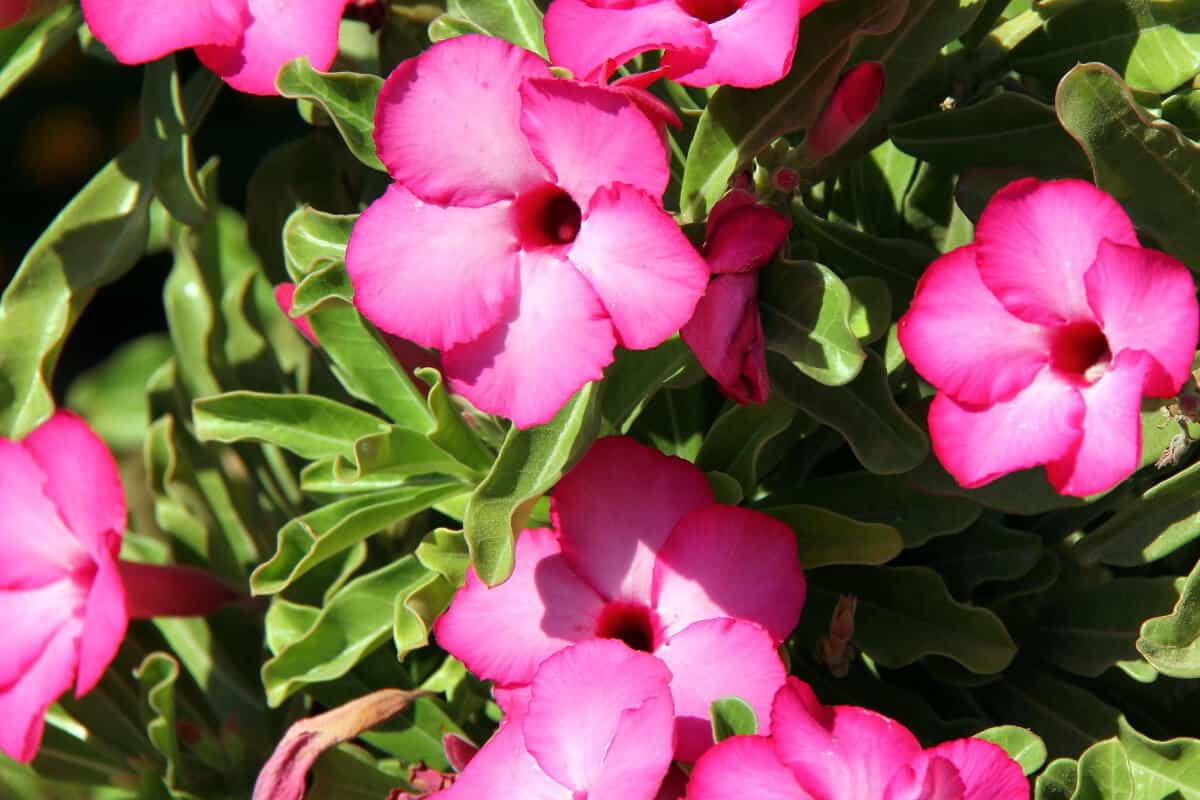
The Desert Rose Bonsai appreciates lots of hours in the sun and will thank you for it with its stunning flowers in pink and red. These perfectly contrast its dark green leaves and waxy foliage.
This plant is not particularly fast in blooming however and will die once exposed to winter or extremely low temperatures. A warm climate is essential for growing this bloom.
18. Baby Rubber Plant (Peperomia Obtusifolia)
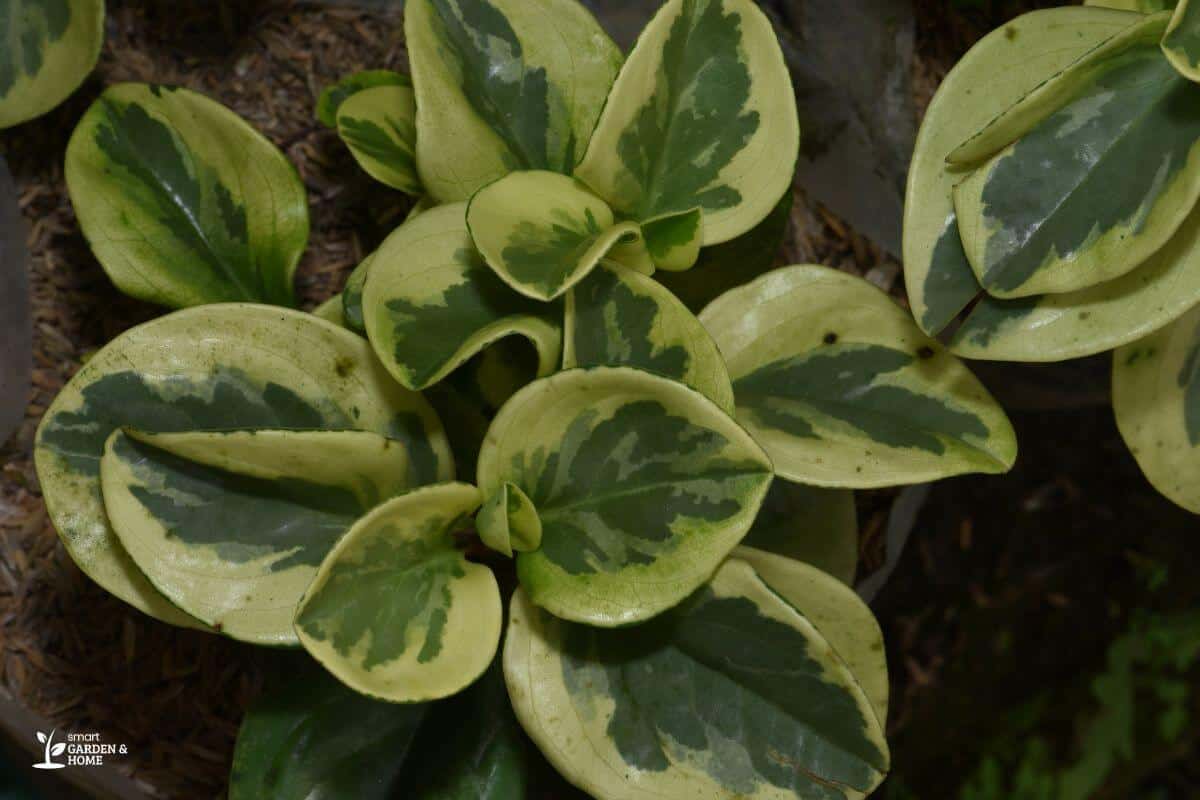
The Baby Rubber Plant belongs to the Piperaceae family.
Originally from Central and South America, this small plant has graced homes and offices around the world due to its easy care and charming appearance.
This plant thrives in well-draining soil and indirect sunlight. It’s important to allow the soil to dry out fully before watering to prevent root rot.
The baby rubber plant thrives in very humid environments so give it a good misting schedule to encourage growth.
You can use the baby rubber plant as an ornamental plant because it has beautiful shades of green and reds that perfectly contrast each other against a plain wall or windowsill.
19. Flaming Katy (Kalanchoe Blossfeldiana)
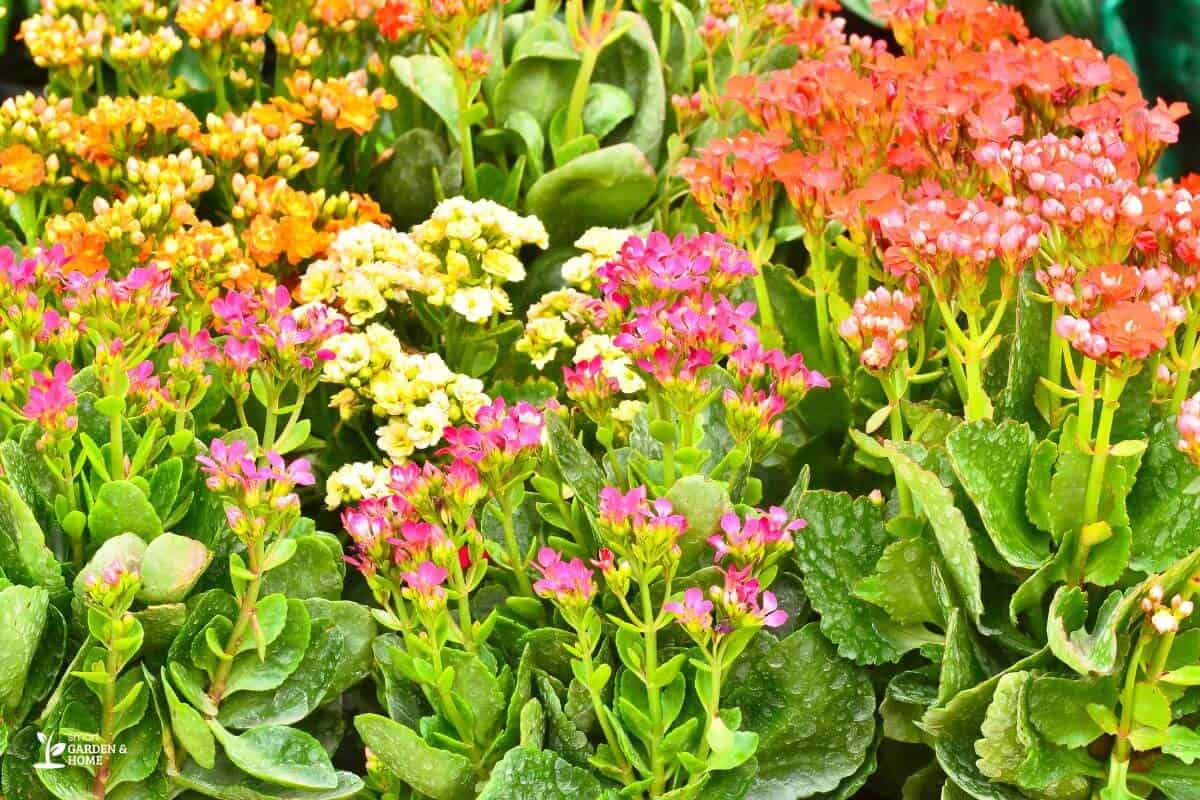
The Flaming Katy is a beautiful succulent plant that originates from Madagascar.
It grows eye-catching blooms that last long in shades of orange, yellow, and pink. It’s a sought-after choice for indoor gardeners because this plant is easy to maintain and requires less care.
As a sun lover, the Flaming Katy requires hours of exposure in bright light conditions but it would also appreciate a bit of shade when the afternoon sun is at its highest.
It also prefers well-draining soil and does not require frequent watering. As always, too much water will suffocate the plant’s roots and cause root rot. Make it a habit to do a soil test before you water again.
The Flaming Katy is loved by many due to its lovely colors that can light up any space in your home. They can be grown in pots and hanging baskets as well as a terrarium.
Final Thoughts on Plants With Waxy Leaves
What makes plants with waxy leaves stand out from other plants is their appearance and texture.
These beautiful plants love high temperatures as much as they like low humidity. The reason for the latter is that their coating helps them retain moisture and helps them survive long in dry seasons.
Yes, their smooth leaves can be eye-catching but the way that they contribute to air purification and increase oxygen levels is capturing our attention all the more.
Familiarize yourself with the plants we just listed above so you can identify them the next time you see them.
To find out more about plants, check out these interesting articles:

